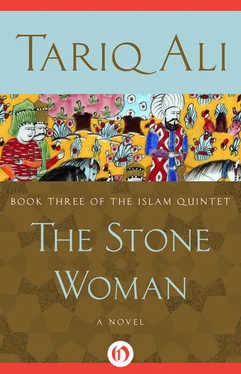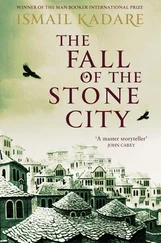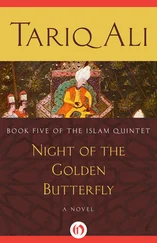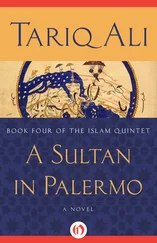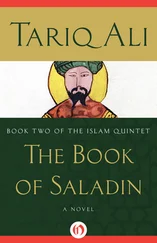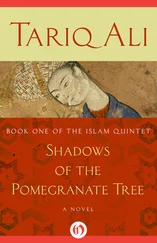“I’m really not sure, Father. He told Petrossian he might be away for a week or ten days in Istanbul.”
“Politics or pleasure?”
“Neither,” I replied. “Family.”
He laughed. “Are the boys and their mother back from Damascus?”
They were and Halil, who had not seen his twins for several months, had been looking forward to seeing them again. I had always been much closer to Salman emotionally and this was still the case. On a human level and since I was a child, Salman and I had discovered we could discuss anything in the world without any sense of shyness or embarrassment. This feeling had remained, despite his long absence, and had delighted both of us this summer. Some relationships are so deep they can survive anything. I felt ours was one of these.
My relationship with Halil, while affectionate, had always been slightly formal. Ever since they were children, Zeynep and he had been close. This had nothing to do with their having a mother in common. They had always exchanged confidences and there was a temperamental affinity as well. Both of them were much more introvert than Salman and myself. Halil, in particular, could also be very secretive. Take his marriage, for example.
He met Catherine almost twenty years ago at a tea party in Istanbul. The Countess Galfalvy was an old family friend, then in her eighties. She was from an old Greek family and had run away in her youth with an impoverished Hungarian count. She spent her life on his family estate, where they had three rooms to themselves. The meals were shared with the family. Her late husband, Gyorgy, had been a painter. He must have painted over a hundred portraits of her during their life together and in every imaginable pose.
In her youth she had been renowned as one of Istanbul’s great beauties and there had been rumours that the Sultan, too, had expressed an interest. Perhaps that was one reason for her unexpected flight with the Count Galfalvy. They had no children and when the count died, she found the three rooms unbearable and returned to Istanbul with all his paintings. To her amazement, a dealer, who had heard of them from a common friend asked, one day, to see the paintings. He spent several hours inspecting each one separately. He must have been honest, for he offered her a great deal of money for all of them. She kept a few she really liked and accepted his offer.
I remember going to see her with my mother on a few occasions. She lived in a large house which was fifteen minutes away from where we lived. Even in the pleasing winter sun the drapes were always drawn in her house. Perhaps she wanted to recreate the closed atmosphere of the rooms where she had spent fifty years with her count. But she was lonely. She missed the smell of oil on canvas. She began to visit the conservatory and would often invite young art students to have tea with her. If they were from poor families, she helped them financially and if they were from other parts of the Empire, she invited them to stay with her. Catherine Alhadeff was an art student from Cairo. She had been staying with some rather unpleasant friends of her father when she met the old lady at the school. Within a week, Catherine was installed in a very large room on the top floor of the house. There were no drapes and the light was perfect. The sun streamed in most of the year. Catherine was thrilled.
Halil saw her one afternoon when he and his mother went to take tea with the Countess Galfalvy. He was greatly impressed by her and probably her name was entered in his notebook later that day as one of the possible brides for him. Salman had once caught sight of the notebook and swore to me that such a list did exist, but when we teased Halil, he blushed and insisted it was a joke. I’m not so sure. I think the list, whether written or not, was always present in his mind. Catherine glided to the top of the list without even trying.
Halil was the type of person who avoided taking risks, but he was not a good judge of character. He once told me that he never trusted his own instincts because they always let him down. When I questioned him further it emerged that three young officers who he thought were loyal to him had let him down badly.
Zeynep was the first to be told about Catherine. Halil felt she would be the perfect wife for him. He did not want to live with a woman who did nothing the whole day. It would drive him mad. He told his mother, who expressed irritation that he wanted to marry a Christian. This really angered Halil. He informed his mother that if he wished, he would marry a monkey.
Then, to our great disappointment, we discovered that Catherine belonged to an orthodox Shia family. Her name was simply the result of her father’s fondness for a sixteenth-century portrait of Catherine de Medici, which he had bought many years ago from a dealer in Istanbul. The painting was unsigned and Catherine’s father had bought it for a very reasonable price. It was when he showed it to a visiting Venetian merchant that the trouble began. The Venetian was convinced it was a Titian and he was so sure of this that he offered to buy it for a fairly large sum of money. Catherine’s father refused to part with the painting. The knowledge that it might be a Titian served only to strengthen his attachment. He grew more and more obsessed with it and when, after four sons, fortune blessed him with a daughter, he named her Catherine, despite the angry protestations of his wife.
The Countess Galfalvy favoured Halil’s suit and recommended it strongly to Catherine’s parents. Catherine herself appeared to be indifferent. She is supposed to have asked Halil whether he would stop her painting and after he had replied that it was one of the reasons why he wished to marry her, she accepted. She never asked him for other reasons. The owner of the Renaissance painting and his family duly arrived in Istanbul as guests of the Countess. The wedding itself was a modest affair. Only the two families and their close friends had been invited.
Catherine was a very striking woman, tall and slender with a dark complexion and shoulder-length dark brown hair. Her back arched delicately underneath her dress. She had thin lips and narrow eyes and the combination gave her a girlish quality. When I saw her for the first time I remember thinking, enviously, that this woman would never really look old.
A year and a half later, Catherine gave birth to a pair of healthy twin boys. There had never been any twins in either our family or hers, which raised a few questions, but as the boys grew all the doubts disappeared. They looked just like Halil and we grew to adore them. They were often at our house and every summer they would come here for a few weeks. Catherine loved this house and she painted it from every angle. Then she would take her canvas and paints to the cliffs and paint the sea. One such painting, in which the seagulls resemble hailstones suspended over the dark green ocean, still hangs in the library. I spoke to her often, but she was usually cold and reserved. It was the same with everyone else. Since Halil was away with the army for extended periods of time, everyone tried to be friendly with her, but, with the single exception of my mother, were politely rebuffed. For some reason Catherine liked my mother. She painted two very fine portraits of her, one of which I have in my old room in the Istanbul house.
It was a few years ago, after the twins had celebrated their fifteenth birthdays, that we realised something was seriously wrong. My source on the subject was, as usual, Zeynep.
“It’s really awful, Nilo, just awful for poor Halil. Awful for poor Halil. I swore I would never tell anyone, but what she is doing is too cruel. Too cruel!”
Whenever she had important news to impart, Zeynep had developed a habit of repeating a sentence or a phrase, imagining that this would somehow double its impact. Its effect on me was the exact opposite. I would get so irritated by her manner of speaking that I could not concentrate on the content. I told her this many times, but she couldn’t really help herself. The story she told me was upsetting.
Читать дальше
